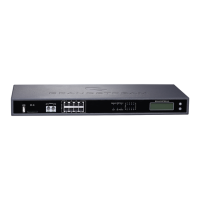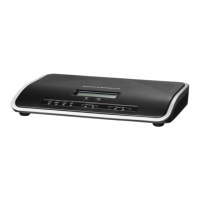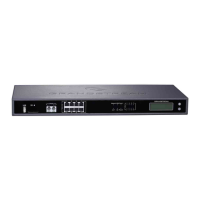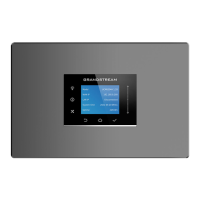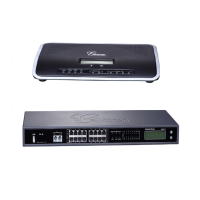P a g e | 197
UCM6510 IP PBX User Manual
Version 1.0.20.31
(such as caller name from CPE over facility) will be enabled.
Configure this option to send overlap digits. If enabled, SETUP message
can include some digits of callee number, and rest of the digits can be sent
using INFORMATION message. If disabled, callee number will be sent via
SETUP message when all the digits are ready.
Some switches (AT&T especially) require network specific facility. Currently
the supported values are "none", "sdn", "megacom", "tollfreemegacom",
"accunet".
Table 55: Digital Hardware Configuration Parameters: T1/J1 - SS7
All E1/T1/J1 spans generate a clock signal on their transmit side. The
parameter determines whether the clock signal from the far end of the
E1/T1/J1 is used as the master source of clock timing. If the far end is used
as the master, the PBX system clock will synchronize to it.
Master: The port will never be used as a source of timing. This is
appropriate when you know the far end should always be a slave to
you.
Slave: The equipment at the far end of the E1/T1 link is the preferred
source of the master clock.
Select ITU, ANSI or CHINA.
Originating point code is used to identify the node originating the message,
always provided by the operator/ISP.
ITU Format: decimal number.
ANSI & CHINA Format: decimal number or XXX-XXX-XXX.
Destination point code is the address to send the message to, always be
provided by the operator/ISP.
ITU Format: decimal number.
ANSI & CHINA Format: decimal number or XXX-XXX-XXX.
When Span Type is E1, ITU & CHINA Range: [0, 4065], ANSI Range: [0,
16353].
When Span Type is T1/J1, ITU & CHINA Range: [0,4072], ANSI Range: [0,
16360].
If set to yes, D-channel will be assigned with a CIC. Else, D-channel will not
be assigned with a CIC. By default, it is set to No.
Network Indicator (NI) should match in nodes, otherwise it might cause
issues. Users can select "National", "National Spare", "International", or
"International Spare". Usually "National" or "International" is used.
The line build-out (LBO) is the distance between the operators and the PBX.
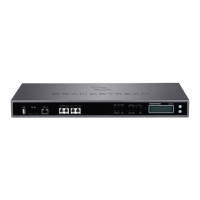
